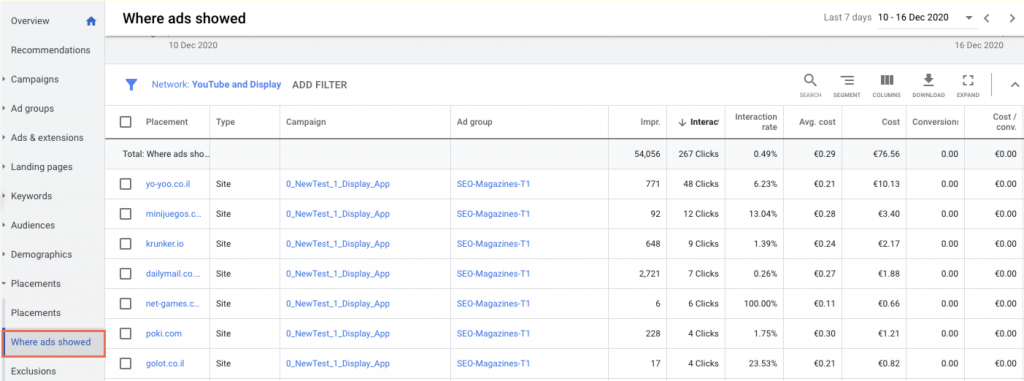How do placement exclusion lists work?

Let’s face it. If you are advertising online you are using the Google Display Network (GDN).
With more than two million websites across the globe, the sheer size of the Google Display Network is both a blessing and a curse for businesses looking to fine-tune their advertising spend.
That is because contained within this gigantic network of URLs are many spam websites.
Using a placement exclusion list
Before running a Google Ads campaign you will want to make sure that your ad impressions only appear on websites that have the best chance of converting to optimise your return on advertising spend (ROAS).
This is a metric based on the principle of return on investment but shows the actual profit achieved per advertising dollar.
While the overall ROI shows the ratio between revenue and cost, ROAS is used to evaluate individual ads and campaigns.
In this way, a company can easily determine their profit per advertising spend.
How can I tell if it’s a bad ad placement
Bad Google ad placements may motivate a person to click but you are only receiving clicks without conversions, and as a result, CPA will go up.
Even if you use smart bidding strategies (like tCPA) you shouldn’t rely on Google algorithms.
They are too slow and only exclude bad ad placements after your money has been spent.
To avoid your CPA skyrocketing you will need to update your placement reports every other day and manually exclude bad placements.
Can I trust a 3rd party placement exclusion list?
If you are using an ad agency it’s important to check that they actively monitor the quality of websites (or apps) that your ads are running on.
Unless you’re only targeting specific websites, there will always be accidental or junk clicks from websites you want nothing to do with.
You’ll know what these sites are when you see them, but a good example would be something like babygames.com.
Your ad might get hundreds of clicks from a website like that, but unless this is a very sophisticated two-year-old, these clicks are a waste of money.
Although it’s impossible to avoid 100% of unwanted GDN clicks, the key is to look at how much of your campaign’s budget is being spent on them.
To check where your ads have been displaying, select the desired display campaign, go under “Placements”, and click “Where ads showed”.

Expert Tip: To preemptively avoid junk clicks, consider disabling your ads on Mobile App placements and excluding specific websites
How do I exclude ad placements?
The traditional approach is to add websites manually as you discover that they are not converting in any meaningful way.
At AdShield we’ve been at this for years (see image below). You could add URLs manually and begin the long road we did, but brace yourself, this is both laborious and expensive to do.

How to add URLs to Google placement exclusion list?
First, you will need to login to your Google Ads account. On the left navigation bar go to ‘placements’ and then ‘exclusions’.
Next, click the pen icon at the top of the screen and it will give you the option to add one placement exclusion or to add a list of placement exclusions.
Saving time with Google exclusion lists.
You can save a huge amount of time by using a placement exclusion list.
AdShield has just released software that will do all of this for you, by uploading our machine engineered Google exclusion list directly to your AdWord account.
Exclude ad placements in 7 steps
You can do this in the following seven simple steps.
1. Login to your Google Ads Account.
2. Click the tools icon in the upper right corner of your account.
3. From Shared library, click Placement exclusion lists.
4. Click the plus button.
5. Select a name for your new list in the List name field.
6. Manually enter placements or upload placements to the list.
7. Click save.
How does the AdShield placement exclusion list software work?
First the software analyzes billions of placements and click-behaviour across thousands and thousands of accounts.
Then combines placement data with data on user behaviour on the landing page of the advertiser, focusing on conversions/events.
It works by automatically pre-blocking low-quality websites and apps from your Google Ads campaign.
And can be directly uploaded to your Google Ads account.
Harnessing an AI-powered SaaS solution will instantly and verifiably save you time and money.